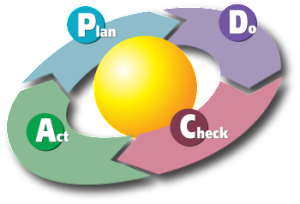In an earlier post, I wrote about (Contact Relationship Management) CRM implementation. In this post, I’m calling attention to the fact that salespersons are paid to sell, and Sales Managers will want to know that any CRM tool is not going to slow their people down. In other words, get in their way. The CRM software used here is Prophet21, but the sales funneling principles are relevant to Microsoft Dynamics, SalesForce, or most other CRM packages.
So the following approach, which I implement a few years back, can be applied by Marketing (and IT, if necessary) to do the “backend work”, setting up contacts and tasks in the CRM for Sales to pursue. Here, rather than ask salespersons to set up their tasks, you, as the CRM expert, use your database marketing skills and intimacy with your CRM tool, to feed your salespersons the leads that they are to follow up on.
Integrated Sales and Marketing
(Making it easy to use)
Purpose: Integrate Sales and Marketing activities using the Contact-By-Salesperson (CBS) report for managing outbound campaigns. Business Units (GM’s) and Support Unit (Marketing) will use this Customer List as a roadmap toward qualifying and placing contacts into the “Contact Pipeline” for generating new business.
The premise here is that rather than have salesperson set up CRM tasks in P21, Marketing will use P21’s Call Center Task Generation feature to push Tasks into P21 for each salesperson. The benefit is that with this approach, Tasks are Integrated, and Sales and Marketing are simultaneously targeting the contacts chosen in the CBS report.
ABOVE: Task Management can be used for salespersons and marketing to focus on accounts and contacts.
——————————————————
Plan, Do, Check, Act: a 4-step continuous improvement method used in measuring and managing projects. Here the multi-faceted nature of integrated sales and marketing initiatives can be implemented and effectiveness of activities (e.g. Outbound Calls, Inbound Calls, Task Management, Field Sales, offline Media) can be measured based on sales conversions. Hooks into contacts and accounts in the CRM are critical for measurement before campaigns are launched.

(PDCA Image Courtesy Creative Commons)
——————————————————
The activities required are:
Set Parameters/Expectations
A pre-defined number of contacts need to be touched monthly — either created, or qualified in the case of contacts existing in P21. A pre-defined number of Outbound Calls will be made by the salesperson assigned to the contact according to the CBS report.
Data Cleansing
IT and Marketing need to address: 1) Sales Rep ID not assigned 2) Contact Types (Customer or Ship To) inconsistencies. These issues are being addressed and require ongoing attention. During the Contact Pipeline management initiative, reports are being generated on a weekly basis identify data discrepancies. Nowhere is “garbage in, garbage out” more true than in business data and reporting. For more on the topic of normalizing OEM electrical data see Electrical Data Centers.
Contact by Salesperson Report (CBS)
identifies contacts and the salesperson responsible. This list is used by GM’s and Marketing to coordinate sales and marketing efforts in generating opportunities. These contacts are the ones placed into the CRM Contact Pipeline.
Segmentation
The CBS can be filtered based on sales activity for contacts. For example, contacts with no sales history, contacts with sales history but need reactivation, etc.Note: Not all salespersons have the same capacity, so the requirement may vary.
Contact Maintenance Training
Marketing provides continued training. To correctly enter contact information, the following must training must occur and become standard practice among users:
Marketing reviews Contact Maintenance steps with all persons who touch P21 contact information including basic contact setup, Ship To Address validation, setting the “Contact Type” and using the Classes tab.
Salespersons fill out a Contact Maintenance form to aid in capturing new contact information
Note: Historically (January 2014), salespersons create on average 2 contacts per day. With continued training, this is a manageable number of contacts to be entered correctly by each salesperson.
Integrated Sales and Marketing
Pipeline” refers to the Sales and Marketing activities that are triggered when Sales qualifies a contact (existing or new) and requests Marketing support.
Step One: Marketing places contacts identified in the Customer List (See Section 2) into the Pipeline (P21 Task Maintenance) . Contacts now appear in salesperson’s P21 Task Maintenance window.Note: this approach eliminates the need for salespersons to set up Tasks. Marketing can batch enter multiple tasks that will appear in the salesperson Task Maintenance queue. This is made possible through P21’s Contact Fast Edit function.
Step Two: Salespersons select contacts in Task Maintenance and make an outbound call to pull up the contact and qualify. Salespersons choose to send qualified contacts an introduction packet using the existing CRM Literature Request drop-down. There is minimal change to what Salespersons already doing (e.g. literature requests) to trigger Marketing to follow-up with communications.
i. Capabilities Brochure: personalized with stamped business card
ii. Email Greeting: Personalized plain text email greeting from salesperson and a brief listing of our capabilities.
iii. Post Card: Special offer on front, Salesperson contact information on back
iv. Product Catalog (modify back to be self mailer)
v. First Order/Next Order, Send gift
Salespersons mark their Tasks complete once they make the outbound call. This clears the Task from the Salesperson’s queue.
- Benchmarks and Success Metrics:
- Outbound Call Report
- Measure revenue increases for all contacts, including new contacts in the Pipeline reached via Outbound Calls and Marketing Touches.
Summary: This plan is very specific to Prophet 21’s CRM Module. I’ve seen this in practice with Microsoft Dynamics and SalesForce as well. The underlying principles are the same. CRMs in general are designed to coordinate Sales and Marketing efforts on groups of customer accounts and contacts –in other words, working together.

Director, Business Innovation.
Electrical Marketing, LLC
email: gcarter@electricalmarketing.net
CONTACT US: 856.381.7834
eCommerce | Content Development | Strategy & Execution


